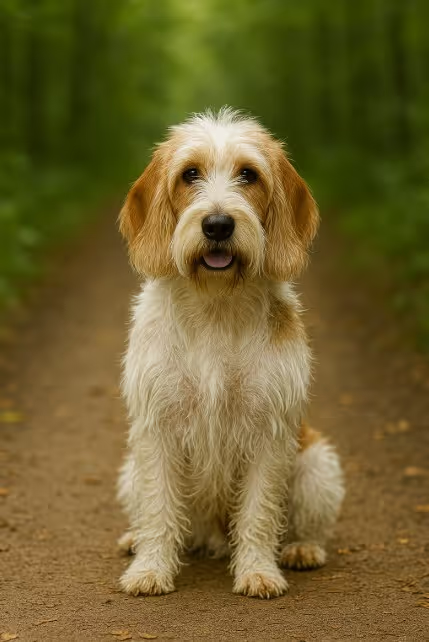The Petit Basset Griffon Vendéen is a merry, medium-small French scenthound with a big voice, bigger heart, and tousled “just-went-hunting” look. Bred to trail rabbit and hare over rough terrain, the PBGV is outgoing, confident, and comedic—yet independent when a scent catches their nose. Great for active families who want a friendly, social dog and can manage houndy vocals and consistent training. If you’re searching “Do PBGVs bark a lot?” or “Are PBGVs good apartment dogs?”, expect an alert talker who can live in condos with daily outlets and bark management.

From France’s Vendée region, the PBGV (“petit” = small; “basset” = low; “griffon” = rough-coated) was developed to hunt rabbit and hare through thorny brush and rocky ground. Its rough coat, fearless attitude, and agile, low build made it ideal for close-quarters work, singly or in packs. The breed shares ancestry with other Vendéen hounds and was standardized in the 20th century; today it is recognized worldwide and remains a lively companion that shines in scent sports.
A low, rectangular, strongly built hound with harsh, protective coat and expressive furnishings.
Low shedding but not “wash-and-go”—routine keeps the coat functional and skin healthy.
An energetic trail dog that thrives with daily nose-work and free movement.
Smart, cheerful, and independent—make training fun, fair, and scent-savvy.
Keep them lean and field-ready while supporting skin/coat and joint health.
Generally hardy, but a few breed-noted issues warrant screening and awareness.
Choose health-tested, well-socialized pups—or consider rescue for this friendly hound.
Do Petit Basset Griffon Vendéens bark a lot?
Yes—they’re vocal “merry hounds.” Teach a reliable “quiet” and meet exercise/mental needs.
Are PBGVs good apartment dogs?
They can be—with 60–90 minutes of daily exercise, enrichment, and consistent bark management.
Are PBGVs hypoallergenic?
No. Shedding is low to moderate with routine hand-stripping and brushing.
How much grooming does a PBGV need?
Brush 2×/week, hand-strip every 6–10 weeks, and clean ears weekly.
How much exercise does a PBGV need?
Plan for 60–90 minutes daily, ideally including sniff-heavy walks and scent games.
Do PBGVs get along with kids and other pets?
Generally excellent with kids and friendly dogs; supervise with small pets due to prey drive.
What is PBGV Pain Syndrome?
An immune-mediated inflammatory condition (meningitis-like) seen in the breed; most respond to prompt veterinary treatment. Ask breeders about incidence.
PBGV vs GBGV—what’s the difference?
The Petit is smaller, lighter, and snappier in movement; the Grand is taller/longer and typically slower, bred for larger game.